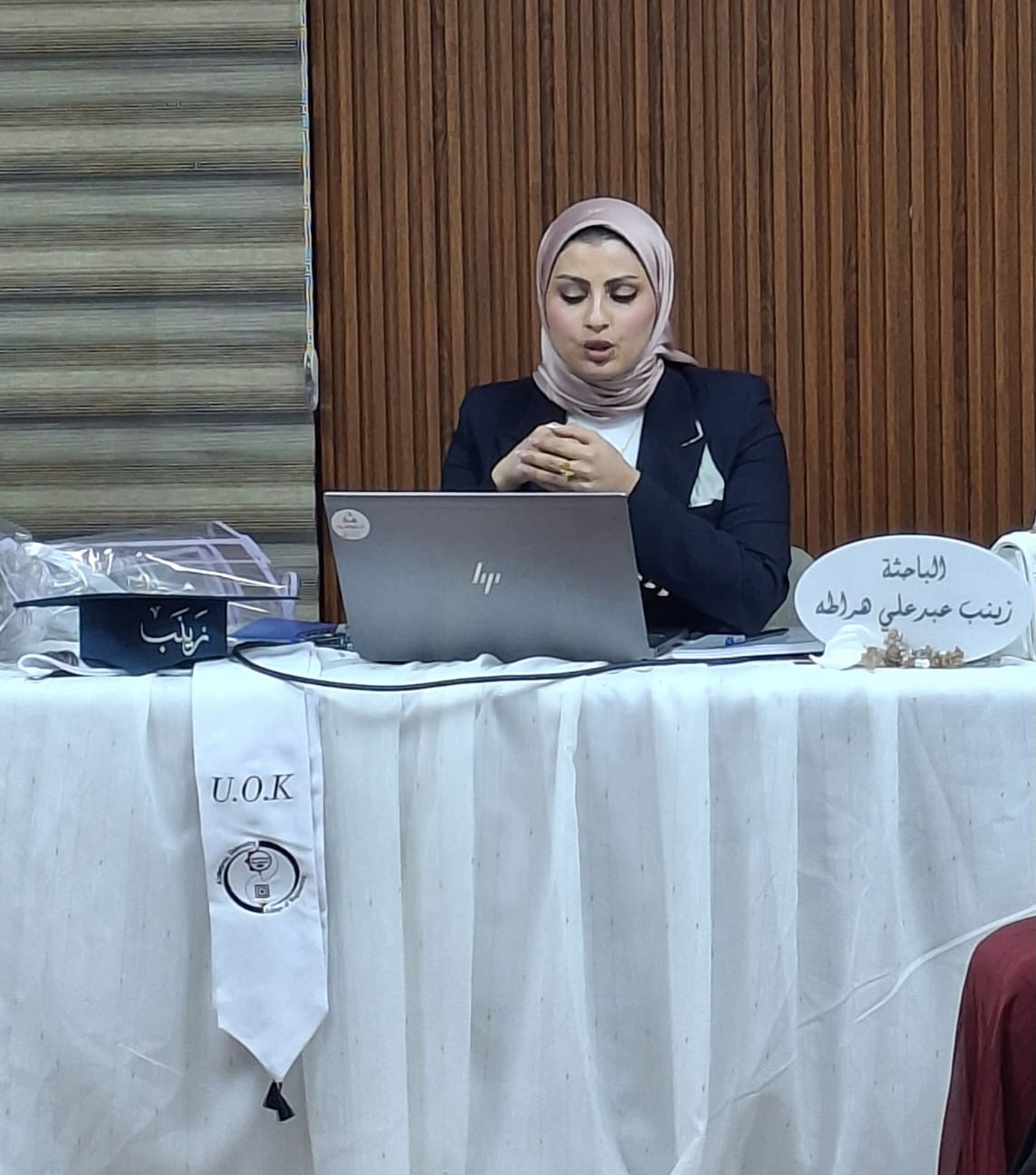Visitors: 28527260 Views
Done By: Laser & Optoelectronic Engineering Department
Post Date: 2025-05-12
Last Browse: 2025-09-14

Discussion of Ms.C. Student Zaineb Abid Ali on 12-5-2025 Microsphere-Assisted Optical Imaging of Materials Microsphere-assisted optical microscopy provides an effective super-resolution imaging technique useful in different fields. In this study, three different types of microsphere were used in different diameter sizes, that polystyrene 1.59 refractive index and (5, 20, 50 µm) diameter size, silicon dioxide 1.42 refractive index and 23 µm diameter size, and barium titanate glass 1.93 refractive index and 27-32 µm and 78-85 µm ranges of diameter sizes. This work involves theoretical modeling and calculations including various parameters such as PNJ’s intensity, position, and the full width at half maximum. These parameters have been experimentally verified with three different types of microspheres: polystyrene (PS), silicon dioxide (SiO₂), and barium titanate glass (BTG) with different size and different immersion environment using COMSOL Multiphysics 6.1. Our experimental work examines the effect of the materials and the effect of different sizes of microspheres, as well as the effect of the surrounding environment on the image position, magnification and resolution using the Euromexmicroscope for imaging. Furthermore, an immersion free imaging technique was proposed by attaching BTG microspheres of 30 µm diameter directly onto the front lens of the microscope’s objective (100x/1.25). The results showed that PS microspheres provided the highest magnification, while SiO2 offered the best contrast, and the 50 µm PS microspheres showed higher magnification and focus position compared to the 5 µm and 20 µm sizes. Moreover, the coupling microsphere immersion (CMI) objective lens (newly objective lens) using BTG 30 µm diameter provided 8.9x magnification, 70 nm subwavelength solved features (140 nm resolution), and an immersion-free imaging technique.